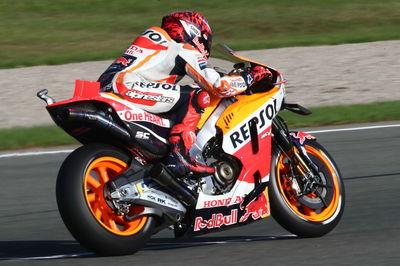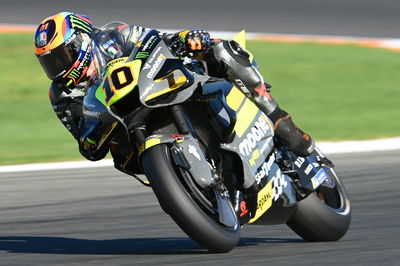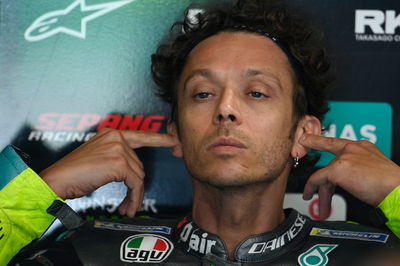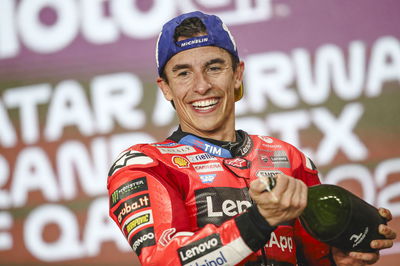Marc Marquez: Aerodynamics, ride-height devices reduce rider input

The latest generation of MotoGP wings first appeared on Ducati’s Desmosedici during 2015 pre-season testing in Qatar, swiftly growing in size and complexity until being clipped by stricter regulations from 2019.
Just as Ducati’s rivals were catching up with aerodynamics, the factory introduced a new technical gizmo that lowered the rear of the bike to help prevent wheelies at the start of a race.
By late 2019 Ducati’s single-use ‘holeshot’ system had been expanded into a repeatable ‘ride-height’ device. The benefits are not only improved acceleration out of slow corners but also reduced drag along the straight and better braking, after which the suspension returns to its normal position.
- Pedro Acosta’s MotoGP debut delayed, but 'a bet has to be honoured!'
- MotoGP Spectators: Germany top, Italy drop, 2.4 million total
- MotoGP falls list: Rookies most, Vinales least, Marquez highest average
Ducati then kept its rivals under technical pressure by turning the front holeshot device into a repeatable ride-height system for 2022.
But results were less clear cut and its long-term future was killed off by a ban on front ride-height systems for 2023 - but rear right height, plus front and rear holeshot devices, will still remain legal.
Six-time MotoGP champion Marquez, who joined the premier class in 2013, feels the new technology is reducing the significance of the rider.
“It's easy [to explain], before everything was more manual,” Marquez said. “Before you only put full torque on the bike in 4th, 5th and 6th gears.
“But now, with the rear device, with the aerodynamics, you can already put full torque in 3rd gear or even the last part of 2nd gear in some tracks.
“Before we were playing with the body [position], with the rear brake, [to control the bike]. Everything was more manual until 4th or 5th gear.
“Now you are already in 3rd gear and it’s like Moto3, [tucked] inside the bike and this is the limit. Especially on acceleration.
“Then on the brake point the bikes are very stable with the aerodynamics.
“Everything is closer now in a single lap [but] in a race, as you see, when one rider is catching another it's so difficult to overtake.”

Marini: Riders can’t do anything in acceleration
While Marquez’s frustration with the latest MotoGP tech could be seen as influenced by Honda’s winless season, Luca Marini, who has spent two years in the premier class with VR46 Ducati, also feels riders have a diminishing impact.
“For me, I would like to have [MotoGP] bikes that are more difficult to ride because then riders can make more difference,” said the Italian.
“Also I think in the small categories like in Supersport 300 or Moto3, the biggest problem is that the bikes are too easy and now MotoGP is going in that direction.
“The bike is very easy for everybody and if you ask all the other riders they will say the same thing.
“Because everybody here wants to be the best rider and, in my opinion, if you want to be the best rider you have [to have more opportunity] to make a difference in some way.
“If we can have something more difficult, where the rider can make a step, I will be happier.
“Because now, for example in acceleration, you can't do anything. The exit of the corner is completely the same for every bike, for every rider.
“So you just need to brake hard, entry fast.”
MotoGP technical rules can usually only be changed by unanimous agreement of the manufacturers' association (MSMA).












